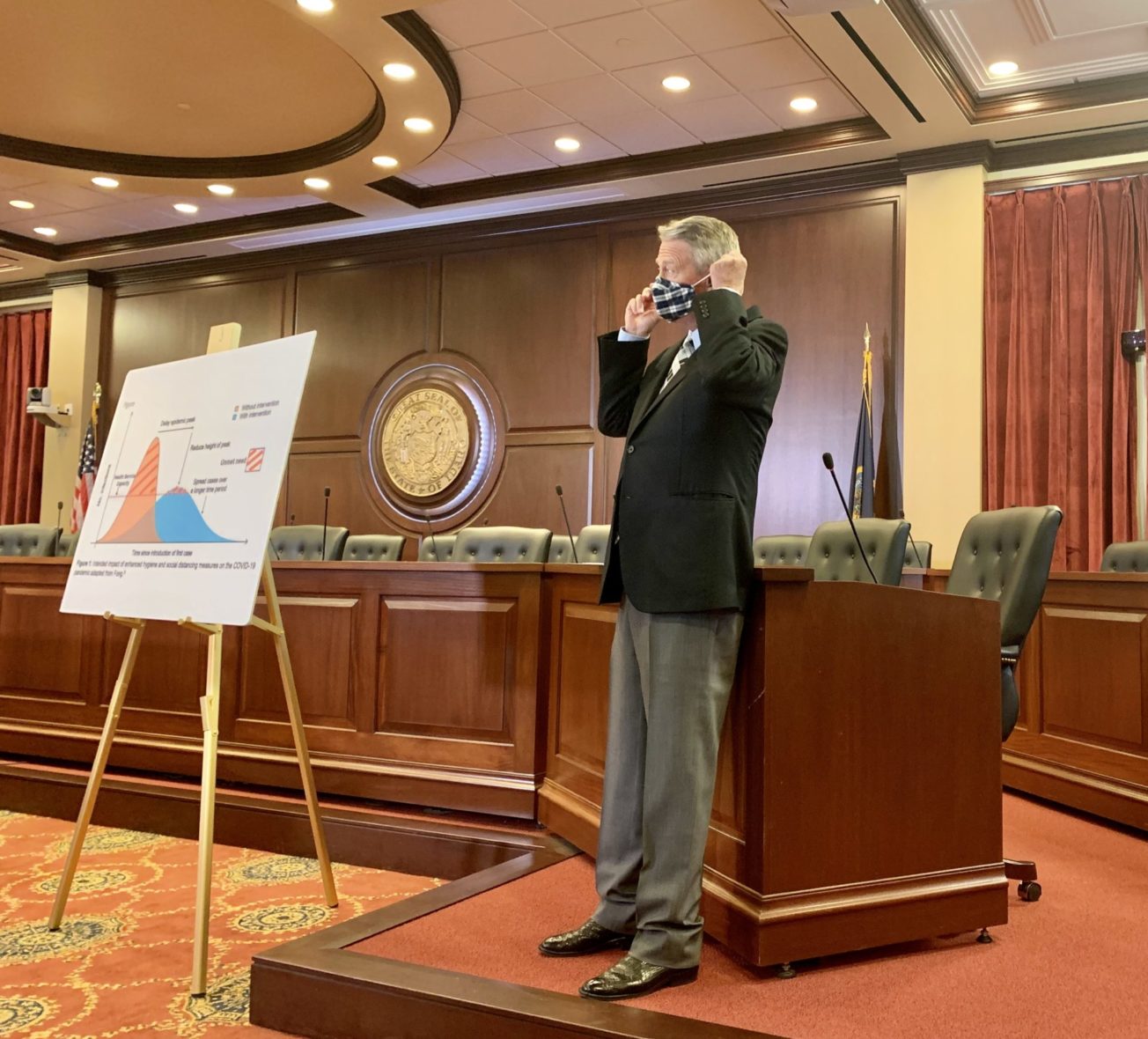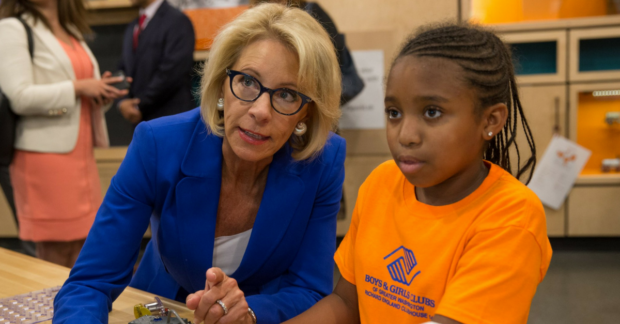
This is what political disconnect looks like.
Despite rising coronavirus case numbers — and, correspondingly, increasing public concern — federal and state officials aren’t budging from their goal. They want and expect schools to reopen in just a few weeks, amidst a seething pandemic.
And the best-case scenario is that this is merely political disconnect. If the critics are right, the reopening is rushed and reckless, and a threat to school children and staff.
Last week, the White House marched in to polarize the issue, trampling local control along the way. President Trump said he wants schools open in the fall, and threatened to withhold federal dollars from schools that remain shuttered.

In a 21-minute CNN interview Sunday, Education Secretary Betsy DeVos clung to the White House talking point, nearly choking the life out of it. “Kids need to get back to school. They need to get back in the classroom. Families need for kids to get back in the classroom, and it can be done safely.”
Details were scarce. DeVos wouldn’t exactly say how schools should respond to local outbreaks. She wouldn’t say whether she would support shifting to remote learning, if school officials deem it necessary. She wouldn’t say whether federal funding cuts are on the table.
By pushing to reopen schools, Trump is also trying to pivot off the coronavirus debate. Operating schools as “normal” supports a larger strategy of “normalizing” the pandemic, and running instead on red-meat social issues. But there’s considerable political risk. A hard sell on school reopening could alienate mothers who vote — just as polls suggest this crucial electoral bloc is tuning out Trump.
Idaho’s all-Republican congressional delegation is taking a measured tone. They’re not criticizing the president — no surprise, when Sen. Jim Risch and Reps. Mike Simpson and Russ Fulcher are also on the ballot this fall alongside Trump. But in statements to Idaho Education News, they all said school reopening decisions should be made at the state or local level.
Enter Gov. Brad Little.
A week ago, and with Trump’s foray into the issue serving as backdrop, Little endorsed his task force’s school reopening guidelines. The 34-page document makes the governor’s intent clear. “It is expected students will return to school buildings in the fall.”
Little isn’t threatening to cut funding. He assembled a 23-member task force to work on the guidelines, and put 12 local school leaders on the panel. Ultimately, Little wants to defer to local school and public health officials. In effect, he’s playing good cop to Trump’s bad cop.
But it isn’t clear how these guidelines will work, exactly. All of the guidelines are tied to coronavirus rates — and whether an area has no community spread, “minimal to moderate” spread or “substantial” spread. When Idaho Education News’ Clark Corbin asked Little if Boise or West Ada schools could open, based on the current surge in cases in Ada County, the governor called the question a “hypothetical.”
It won’t be a hypothetical question a month from today when Boise schools open Aug. 17.
And here’s a cold set of facts that isn’t the least bit hypothetical. On June 17, when Little unveiled his school reopening committee, Idaho had 3,654 confirmed or probable coronavirus cases. On Wednesday — after the state and the health districts reported yet another one-day spike in new cases — the number stood at 12,579.
Trends can change between now and the first day of school. No one is rooting against that. But right now, Little is on the wrong side of some dreadful numbers.
And maybe on the wrong side of the debate. We’ve already seen it happen. As the state counted up its first few coronavirus cases, Little hopped on a March 15 conference call with school administrators. He encouraged them to keep their buildings open, citing Centers for Disease Control guidelines that cautioned against closing down too early in an outbreak.
Within hours and days, most school districts decided to close — prompting the State Board of Education to order a statewide shutdown on March 23.
School leaders have had more time — and still have some more time — to plan for the fall. But by the same token, parents have had more time to weigh their options. We won’t know what they’re thinking, collectively, until opening day.
But Little, State Board members and state superintendent Sherri Ybarra have long touted the virtues of parental choice. We’ll soon see what choice looks like during a pandemic.
If Idahoans are thinking like the rest of the nation, as case numbers swell across a wide swath of states, an exodus from brick-and-mortar school appears possible. According to an Axios-Ipsos poll released Tuesday, 71 percent of respondents said they considered fall classes moderately or highly risky (a strong majority, even allowing for its 7 percent margin for error).
The medical community, nationally and locally, might be even more alarmed.
The Treasure Valley is headed for a “catastrophe,” Saint Alphonsus hospital system chief clinical officer Steven Nemerson told Central District Health’s board Tuesday. The only way to head it off — and safely reopen businesses and schools — is to act quickly.
“The train has left the station,” said Nemerson, shortly before the board issued a mask mandate for all of Ada County. “We are headed to become New York, California, Arizona, Houston.”
Strong words. And fundamentally disconnected from the rhetoric of reopening.
Each week, Kevin Richert writes an analysis on education policy and education politics. Look for it every Thursday.
